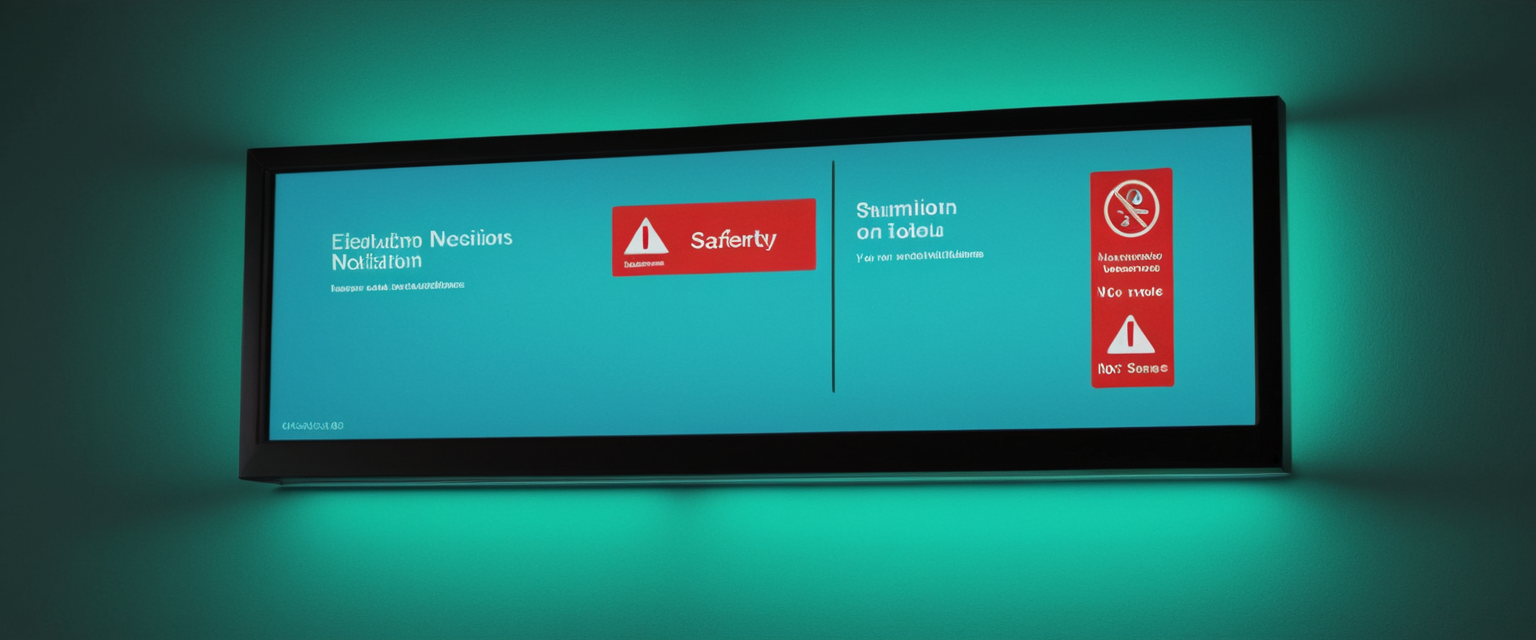
Every year, millions of consumers receive data breach notification letters informing them that their personal information may have been compromised in security incidents affecting corporations, healthcare providers, government agencies, and financial institutions. The task of deciphering these notifications can feel overwhelming, particularly when recipients lack understanding of what information has been exposed, what risks they face, or what actionable steps they should take to protect themselves. This comprehensive guide provides consumers, organizations, and privacy advocates with the knowledge necessary to expertly read and interpret breach notification letters, understand the legal requirements governing them, assess personal risk based on the type of information exposed, distinguish legitimate notices from fraudulent phishing attempts, and implement effective protective measures. The fundamental goal of learning to read a breach notice like a professional is to transform what initially seems like a confusing and anxiety-inducing document into an actionable roadmap for identity protection and fraud prevention. The scale of this challenge has grown substantially, as the Identity Theft Resource Center reports that 1.36 million data breach victim notices were sent in the United States in 2024 alone, making breach notification literacy an essential skill for modern consumers navigating an increasingly digital landscape.
Understanding Data Breach Notifications: Context and Legal Framework
The Evolution and Prevalence of Data Breach Notifications
Data breaches have become an unfortunate but recurring feature of modern business operations, transforming breach notification from a rare event into a commonplace occurrence affecting consumers across all industries and regions. The landscape has fundamentally shifted as cybercriminals have become increasingly sophisticated and persistent in their targeting of organizational databases, payment systems, and personal information repositories. Understanding the context in which breach notifications operate requires recognizing that these letters represent both a legal mandate and a communication necessity, as organizations must inform affected parties while simultaneously managing reputational damage, regulatory compliance, and potential litigation. The proliferation of breaches has been accompanied by a corresponding increase in legislative requirements, creating a complex patchwork of federal and state laws that dictate when, how, and to whom organizations must communicate about security incidents. The regulatory environment has become progressively more stringent, with privacy advocates and legislators recognizing that timely, clear communication to affected individuals represents the only mechanism through which consumers can take protective action before their compromised information is weaponized by criminals. Organizations now operate under the understanding that transparent, comprehensive breach notification is not merely a legal formality but a critical component of incident response and reputation management.
The Legal Landscape Governing Breach Notifications
The regulatory framework governing data breach notifications in the United States represents a complex mosaic of federal laws, state statutes, and industry-specific regulations that vary significantly in their requirements and stringency. All fifty states, the District of Columbia, Puerto Rico, and the Virgin Islands have enacted legislation requiring notification of security breaches involving personal information, though the specific definitions, timelines, and content requirements differ substantially across jurisdictions. For healthcare-covered entities and business associates under the Health Insurance Portability and Accountability Act (HIPAA), a distinct federal regulatory regime applies, mandating that covered entities notify affected individuals of breaches of unsecured protected health information without unreasonable delay and no later than 60 calendar days from the discovery of the breach. The HIPAA Breach Notification Rule presumes that any impermissible use or disclosure of unsecured protected health information represents a breach unless the covered entity demonstrates that there is a “low probability” that the information has been compromised, applying a rigorous four-factor test to assess whether notification is necessary. In California, one of the most stringent state regimes, organizations must notify individuals “in the most expedient time possible and without unreasonable delay,” and the law has been continuously updated to expand the definition of covered personal information as threats evolve, most recently adding online account credentials and automated license plate reader data. The European Union operates under an even more stringent framework through the General Data Protection Regulation (GDPR), which requires organizations to notify data protection authorities within 72 hours of becoming aware of a breach and to notify affected individuals without undue delay when the breach represents a high risk to their rights and freedoms. Organizations operating across multiple jurisdictions must navigate these varying requirements simultaneously, often resulting in the adoption of the most stringent timeline and content requirements to ensure comprehensive compliance. Failure to adhere to state and federal breach notification requirements can result in substantial civil monetary penalties, regulatory investigations, and private lawsuits from affected consumers, creating powerful financial incentives for organizations to comply with all applicable notification requirements.
The Anatomy of a Breach Notice: Essential Elements to Look For
Identifying the Sender and Verifying Legitimacy
The first step in reading a breach notification letter like a professional involves carefully identifying the sender and verifying that the communication is genuinely from the organization whose systems were breached rather than from scammers exploiting the incident to conduct phishing attacks. Legitimate breach notifications should always originate from a company or organization’s official email address, mailing address, or through official communication channels that can be independently verified by checking the organization’s official website or by calling a known contact number for the organization. Real data breach notifications will include specific contact information for the notifying organization, including official phone numbers, mailing addresses, and email addresses that recipients can use to verify the communication’s authenticity. Recipients should be immediately suspicious of emails from free email services like Gmail or Yahoo, or from domains that do not closely match the organization’s legitimate business domain, as these are common indicators of fraudulent phishing messages disguised as breach notices. A significant red flag should arise when the message uses generic greetings such as “Dear Customer” or “Dear User” rather than addressing the recipient by name, as legitimate companies typically personalize communications to specific account holders. The presence of spelling and grammar errors, poor formatting, or inconsistent branding typically indicates a fraudulent message, as legitimate organizations invest in professional communication crafting for breach notices, which carry significant legal implications and reputational consequences. Recipients concerned about the authenticity of a breach notification should independently verify the communication by contacting the organization using contact information obtained from official sources rather than using any contact details provided in the potentially fraudulent message itself. The stakes of distinguishing between legitimate and fraudulent breach notices are substantial, as phishing messages designed to look like breach notices can trick recipients into clicking malicious links, downloading malware, or providing sensitive information that criminals can exploit to commit identity theft or financial fraud.
Required Content Elements in Legitimate Breach Notices
Legitimate data breach notification letters must contain specific content elements to ensure that recipients have sufficient information to understand what has happened, assess their personal risk, and take appropriate protective action. The Federal Trade Commission and state attorneys general have developed guidance on what breach notices should include, and California has been particularly prescriptive in legislating the required content of breach notifications to ensure they are helpful to recipients. Legitimate breach notices must clearly identify the name and contact information of the notifying organization, providing multiple mechanisms through which affected individuals can request additional information or report suspicious activity. The notice must explain what happened during the security incident, including how the breach occurred, when the breach was discovered, and when the breach actually took place—information that helps recipients understand the timeline and assess how long their information may have been at risk. Legitimate breach notices must clearly describe the types of personal information that were potentially exposed or stolen in the breach, providing sufficient specificity that recipients can understand which of their data elements are at risk and tailor their protective responses accordingly. The notification should explain what actions the breached organization has taken or is taking to remedy the situation, including containment of the breach, remediation of vulnerabilities that allowed the unauthorized access, and investigation of the scope and cause of the incident. Importantly, legitimate breach notices should clearly inform recipients about what specific steps they can take to protect themselves, including advice about contacting credit bureaus, placing fraud alerts or credit freezes, monitoring financial accounts for fraudulent activity, and contacting the Federal Trade Commission if they discover that their information has been misused. California law requires that breach notices include contact information for the credit reporting agencies when a breach involves Social Security numbers or driver’s license numbers, ensuring that recipients have ready access to the three major credit bureaus—Equifax, Experian, and TransUnion—where they can take protective action. Many organizations now include information about whether free credit monitoring or identity theft protection services are being offered as part of the breach response, and recipients should carefully review these offers to understand what protections are available and whether they meet their individual needs. The notification should describe any limitations on the company’s ability to provide information at the time of notification and indicate how recipients will be kept informed as additional information becomes available, recognizing that breach investigations often take time and new details emerge in the weeks and months following initial notification.
Decoding the Information: Interpreting What Was Exposed
Understanding the Categories and Risk Levels of Exposed Data
The specific type of personal information that was exposed in a data breach determines the severity of risk that affected individuals face and guides the protective actions they should take. Data breaches expose different categories of information that carry varying levels of risk, and recipients of breach notifications must understand these categories to properly assess their situation and implement appropriate defenses. Financial information represents the highest-risk category for immediate harm and includes credit card numbers, bank account numbers, routing numbers, financial account numbers, and brokerage account information. When financial information is exposed, criminals can potentially use this information to make unauthorized purchases, drain bank accounts, or liquidate investment accounts, creating immediate financial jeopardy that requires rapid protective action such as monitoring account statements closely, considering account closure and reopening with new numbers, and potentially placing fraud alerts or credit freezes on credit files. Social Security numbers, when combined with other personally identifiable information, create particularly serious risks because they can be used for identity theft including opening new credit accounts, filing fraudulent tax returns, obtaining government benefits fraudulently, or committing medical identity theft. Individuals whose Social Security numbers have been exposed should consider this information as permanently compromised and should implement long-term monitoring and protective strategies. Medical or health information, when exposed, creates risks of medical identity theft in which criminals use another person’s identity to obtain medical services, purchase prescription drugs, or file fraudulent medical insurance claims, which can result in false medical records and life-threatening treatment errors. Healthcare data breaches also create privacy violations and potential psychological harm, as sensitive health information can be misused for discrimination or embarrassment. Account credentials such as usernames and passwords, particularly when exposed as a combination that provides access to online accounts, create immediate risk of account takeover and potential cascading compromise of other accounts if the individual has reused credentials across multiple services. Other personal information that may not be immediately monetizable but could be used for phishing, social engineering, or embarrassment includes names, addresses, email addresses, phone numbers, personal communications, and photos, all of which require different protective strategies than financial or medical information.
Assessing the Scope and Scale of Exposure
The scope and scale of a data breach—meaning how many individuals were affected and how thoroughly their information was accessed—provides important context for understanding the seriousness of the incident and the likelihood that an individual’s specific information will be misused by criminals. A breach affecting 1,000 individuals is fundamentally different from one affecting 100,000 or 192.7 million individuals, as larger breaches typically attract more criminal attention and are more likely to be sold on dark web marketplaces or exploited by organized criminal networks. Recipients should note whether the notification indicates that their specific information was confirmed as compromised or whether they are simply included in a notification because their information may have been at risk during the timeframe when the breach occurred. This distinction matters because a data breach might affect a company’s entire user database, but law enforcement or the breached organization might not know specifically which records were accessed or stolen by the attacker, meaning that some individuals notified may not actually have had their specific information compromised. The breach notification should ideally explain whether the company knows that specific criminals accessed the data, and whether the data has been found for sale on dark web marketplaces or used to commit fraud—information that helps recipients understand the likelihood of their information being actively exploited. For particularly large breaches, such as the Change Healthcare ransomware attack affecting 192.7 million individuals, the scale becomes almost incomprehensible, but even in these cases recipients should focus on understanding what specific information about them was exposed and whether they fall into any subcategories of particularly high-risk victims based on their use of healthcare services.
Understanding Timeframes and Discovery Dates
Breach notification letters should clearly communicate when the breach actually occurred, when the company discovered the breach, and when the company is providing notification to affected individuals—dates that create an important timeline helping recipients understand how long their information was potentially accessible to criminals. The date the breach occurred matters because it helps recipients understand how long their information has potentially been at risk and whether there are already suspicious activities on their accounts that occurred after the breach date. For example, if a breach occurred on January 15 and discovery is reported as March 1, there is a substantial period during which criminals had access to data, and recipients should particularly closely scrutinize their account activity from mid-January through early March for suspicious transactions. Understanding the discovery date matters because regulatory requirements for notification typically count forward from the date of discovery, meaning that some time delay between discovery and notification is expected and normal. However, recipients should be concerned if the discovery date is significantly recent relative to the breach date, as this can indicate that the company failed to detect the compromise promptly—a finding that raises questions about the organization’s security practices and breach detection capabilities. The timeline between discovery and notification is governed by state and federal law, with most states requiring “expeditious” or “without unreasonable delay” notification, while HIPAA specifically mandates notification within 60 days of discovery. If a company takes the maximum time allowed to notify (such as the 60-day HIPAA deadline), this should not necessarily be viewed as problematic, as companies often require significant time to determine exactly who was affected before they can notify with specificity. However, recipients should note significant delays or should be alert to notifications that come many months or even years after a breach occurred, as this could indicate either a company’s delayed discovery or delayed investigation, both of which are concerning.
Protect Your Digital Life with Activate Security
Get 14 powerful security tools in one comprehensive suite. VPN, antivirus, password manager, dark web monitoring, and more.
Get Protected Now
Distinguishing Legitimate from Fraudulent Notifications
Red Flags Indicating Fraudulent Breach Notices
Cybercriminals have increasingly exploited real and reported data breaches to conduct phishing attacks against potentially affected individuals by sending fraudulent messages that appear to be legitimate breach notifications but are designed to trick recipients into revealing sensitive information or downloading malware. Recipients of breach notifications should carefully evaluate whether the communication exhibits warning signs of fraudulent origin rather than assuming that any message claiming to announce a breach is legitimate. A critical red flag is when a message requests immediate action or creates artificial urgency by claiming that an account is locked, compromised, or at risk and demanding that the recipient immediately click a link, open an attachment, or provide information to verify their identity. Legitimate breach notifications may include links to additional information about protective steps, but legitimate companies never request that recipients click a link to “verify” their identity or enter passwords or sensitive information into web forms accessed through links in the notification message. Phishing messages pretending to be breach notices commonly request that recipients click on a link to reset their password, confirm their identity, or access account information, but legitimate companies understand that hackers could intercept such communications and instead direct recipients to independently contact the company using official channels or to navigate to the company’s website through independent means rather than through links in the message. Recipients should inspect links embedded in suspicious messages by hovering over them (without clicking) to see the actual URL before opening any link, and they should be immediately suspicious of URLs that do not match the legitimate organization’s domain or that use misspelled domains intended to deceive (such as “amaz0n.com” instead of “amazon.com”). Messages that request attachments to be opened or downloaded should trigger immediate suspicion, as legitimate breach notifications rarely require attachments and downloading files from suspicious sources is a common mechanism for malware distribution. Generic greetings that do not include the recipient’s name are another significant indicator of fraudulent communications, as legitimate companies typically personalize breach notifications to specific customers. Suspicious messages frequently contain spelling, grammar, or formatting errors that legitimate organizations would not include in official communications, particularly those carrying legal and reputational significance like breach notifications.
Verification Strategies for Questioned Notifications
When recipients receive a breach notification and question its legitimacy, they should take proactive steps to verify the communication’s authenticity before taking any action based on the message or providing any personal information. The most reliable verification strategy is to independently contact the organization using contact information obtained from official sources rather than using any contact details provided in the potentially fraudulent message itself. Recipients can verify a breach notification’s legitimacy by visiting the organization’s official website (by typing the URL into the browser rather than clicking any links) and looking for official announcements about the breach, or by calling the organization using a phone number listed on legitimate business documents or found through independent directory searches. Legitimate organizations typically post information about data breaches on their websites as part of their crisis communications, and major breaches are often reported in news media from reputable sources—recipients can search for news articles about a breach to see if the incident is publicly confirmed. Recipients skeptical about whether they truly are customers of an organization that allegedly experienced a breach can log into their actual account with that organization (by navigating to the official website independently) and check their account settings for security notifications or information about the breach. Government agencies provide resources for consumers to verify breach reports, and the Federal Trade Commission maintains information about common scams and fraud tactics—recipients can check identitytheft.gov to verify whether a breach is authentic. If a recipient remains unsure about whether a notification is legitimate after attempting independent verification, they can file a report with the Federal Trade Commission or their state attorney general’s office, providing copies of the suspicious message for investigation.
Understanding the Timing and Distribution Method
Understanding how a breach notification arrives can provide additional context about its legitimacy, as different organizations use different notification methods, and fraudsters may use notification methods that would be unusual for the legitimate organization in question. Legitimate breach notifications typically arrive through official communication channels that recipients have previously used to communicate with the organization, such as email addresses on file or mailing addresses associated with the account. If an individual receives a breach notification by email but they have never provided an email address to the organization or the email is sent to an email address they do not regularly use, this raises questions about the message’s legitimacy. Physical breach notification letters arriving in the mail from verified return addresses of legitimate organizations are generally reliable, as reproducing official letterhead and orchestrating mail delivery would be more difficult for phishing campaigns than sending emails. Recipients should note that legitimate organizations sometimes use business names slightly different from their consumer-facing brands, so a notification letter arriving from a company’s legal entity name (rather than its consumer brand name) may still be legitimate, but the contents should still be carefully scrutinized. The notification method can vary based on the organization’s practices and the scale of the breach—for example, mass breaches affecting hundreds of thousands of individuals might be announced through press releases and website postings before individual notifications are sent, whereas smaller breaches might proceed directly to individual notification letters.
Taking Action: A Step-by-Step Response Guide
Immediate Actions Upon Receiving a Breach Notification
Receiving a data breach notification naturally provokes anxiety and uncertainty about what actions to prioritize, but recipients who understand the proper sequence of response activities can efficiently protect themselves while avoiding common mistakes that waste time or provide false security. The first action after reading and understanding a breach notification is to change passwords for the affected account and for any other accounts that use similar or identical credentials, particularly if the breach involved account credentials or passwords themselves. When changing passwords, recipients should create strong, unique passwords for each account that use combinations of uppercase and lowercase letters, numbers, and special characters, and they should avoid reusing the same password across multiple accounts even if they are tempted to do so for simplicity. Individuals should take particular care to change passwords immediately if the breach involved any online account credentials or if the individual has reused the same username-password combination across multiple services, as criminals actively exploit credential reuse to compromise multiple accounts belonging to the same person. After changing passwords on affected accounts, recipients should consider enabling multi-factor authentication on the affected account and on other important accounts such as email, banking, and social media services, as this provides an additional layer of security that prevents account takeover even if passwords are compromised. Recipients should contact the breached organization’s customer service to determine what other protective measures are available, such as changing the username, changing the account number (for financial accounts), adding extra security questions with updated information, or enabling additional verification requirements for account access. Individuals should inquire whether the breached organization is offering free credit monitoring or identity theft protection services, and if so, they should carefully review the terms and determine whether the offering meets their needs and how to enroll. Individuals should also ask the breached organization whether additional information is expected to become available as their investigation progresses, and they should request to be informed when new details emerge.
Credit Monitoring and Fraud Alert Placement
Individuals affected by data breaches involving financial information, Social Security numbers, or other identity-sensitive data should take proactive steps to monitor their credit files for unauthorized account openings or fraudulent activity that might indicate that their compromised information has been weaponized by criminals. The first step is to place a fraud alert on credit files with the three major credit reporting bureaus—Equifax, Experian, and TransUnion—which is free and tells prospective creditors to take extra verification steps before extending credit in a consumer’s name. An initial fraud alert lasts for one year and provides the benefit of making it more difficult for criminals to open new credit accounts using a victim’s identity, as creditors are required to verify the applicant’s identity through additional means when a fraud alert is in place. Consumers can place a fraud alert by contacting any of the three credit bureaus, and the contacted bureau is required to notify the other two bureaus of the alert. Individuals who have been victimized by identity theft are entitled to place an extended fraud alert lasting seven years, and if they file a police report or identity theft report with the FTC, they can provide documentation of the fraud to support the extended alert. Beyond the fraud alert, consumers may want to consider a credit freeze, which is a more comprehensive protective measure that prevents creditors from accessing a consumer’s credit report entirely unless the consumer provides a specific PIN to temporarily lift the freeze. A credit freeze is more protective than a fraud alert but also more inconvenient because the consumer must temporarily lift the freeze whenever they apply for new credit, so many consumers choose to use a fraud alert initially and upgrade to a freeze if fraudulent accounts are discovered. Once fraud alerts are in place, consumers should order free credit reports from all three bureaus at annualcreditreport.com or by calling 1-877-322-8228, and they should carefully review these reports for accounts or inquiries they did not authorize. If fraudulent accounts or inquiries appear on credit reports, consumers should file a dispute with the credit bureau and contact the businesses that opened the unauthorized accounts to report the fraud and request account closure. Consumers should continue monitoring credit reports regularly, particularly in the first year after a breach, as fraudsters may not immediately exploit exposed information and delayed fraud is common.
Financial Account and Medical Account Monitoring
Beyond credit report monitoring, individuals whose financial information was exposed in a data breach should implement direct monitoring of their financial accounts themselves, as this can reveal fraudulent activity more quickly than relying solely on credit report monitoring to detect fraud. Individuals should begin monitoring their bank and credit card statements immediately after learning about a breach involving financial information, and they should look for any unauthorized transactions no matter how small. Many fraudsters test stolen financial information by making small purchases to see whether they are detected before escalating to larger fraudulent transactions, so vigilance in catching these small test transactions can prevent larger fraud. Individuals should consider monitoring their accounts weekly in the immediate month after a breach and then continuing monthly monitoring indefinitely. If suspicious transactions are discovered, consumers should immediately contact their financial institutions to report the fraud, request that fraudulent transactions be reversed, and ask that the account be closed and reopened with a new account number. Consumers should ask whether they need to close accounts and whether new cards with new numbers are needed, as many institutions proactively issue replacement cards with different numbers after breaches involving their customers’ card information. Individuals whose medical or health insurance information was exposed should similarly monitor medical billing statements and explanation of benefits documents for services they did not receive. If individuals discover that their medical insurance is being billed for services they did not receive, they should contact their insurance provider and the healthcare providers allegedly providing the services to report the fraud and request investigation. Individuals should request copies of their medical records to ensure that the records contain accurate information and do not include false diagnoses or treatments that could affect future medical care.
Tax Filing and Social Security Monitoring
Individuals whose Social Security numbers have been exposed in data breaches face particular risk of tax identity theft, in which criminals file fraudulent tax returns using a victim’s Social Security number and personal information to claim refunds that are diverted to accounts controlled by the fraudster. This form of identity theft can cause years of complications with the Internal Revenue Service, so proactive protection is particularly important. The most effective protection against tax identity theft is to file tax returns as early as possible each year, before criminals have an opportunity to file fraudulent returns using the victim’s information. Individuals should consider filing taxes in January or February rather than waiting until April, as this provides the earliest opportunity to claim the refund and prevents criminals from filing first. Individuals should also monitor their Social Security statements by creating an account at ssa.gov to check for earnings activity that does not match their actual employment history, as fraudsters sometimes use stolen Social Security numbers to obtain employment, which creates false earnings records. Individuals whose Social Security numbers were exposed should watch their Social Security statements for years after a breach, as criminals may use Social Security numbers repeatedly and exploitation may not be immediate.
Monitoring and Documentation Strategies

Creating a Personal Breach Record
Individuals who receive multiple breach notifications over time may find it difficult to remember which organizations experienced breaches affecting their information, what specific data was exposed, and what protective actions they have already taken. Creating a personal breach record provides an important mechanism for tracking breaches and ensuring that appropriate protective measures are maintained. Individuals should maintain a personal file or spreadsheet that documents each breach notification they receive, including the name and industry of the affected organization, the date the breach occurred, the date it was discovered, the date the notification was received, what specific information was exposed, and what protective actions were taken in response. This documentation helps individuals understand the scope of their exposure across all breaches and provides reference information if they later need to dispute fraudulent accounts or file identity theft reports. Individuals should save copies of all breach notification letters they receive, either in physical files or in digital scans, as these documents may be needed if they later need to verify their status as victims of identity theft or if they pursue legal action. For breaches that offered free credit monitoring or identity theft protection services, individuals should document the enrollment dates, the duration of the services, and any enrollment credentials they might need to access the services in future months. Individuals should note any federal Trade Commission case numbers if they file identity theft reports in response to breaches, as these numbers are important reference documents for disputing fraudulent accounts or contacting law enforcement.
Long-Term Vigilance and Annual Reviews
Protecting personal information after a data breach requires ongoing vigilance that extends well beyond the immediate response period, as criminals may exploit compromised information years after a breach occurs. Experts recommend that individuals continue monitoring credit reports annually even after the initial post-breach monitoring period has ended, as new fraudulent accounts might appear months or years later. Individuals who have been affected by data breaches should consider maintaining fraud alerts or credit freezes indefinitely rather than allowing these protections to expire, as the value of this protection often outweighs the minimal inconvenience of temporarily lifting a freeze when applying for legitimate new credit. Annual reviews of financial accounts, medical records, and Social Security statements help identify emerging fraud that might otherwise go undetected, and this practice is valuable for all consumers but particularly important for those who have been breach victims. Individuals should consider implementing a calendar reminder to review credit reports and account activity annually, and they should consider doing this review at the same time each year to establish a consistent routine. This long-term vigilance approach reflects the reality that identity theft risks persist indefinitely once personal information has been compromised, and maintaining protective vigilance requires sustained effort over years rather than just months.
Navigating the Legal and Regulatory Landscape
Understanding State-Specific Notification Requirements
Because data breach notification law varies substantially across states, individuals need to understand that the specific content and protections provided by breach notifications may depend on which state they reside in and which states’ laws apply to the breached organization. For individuals residing in California, breach notices are subject to some of the most stringent requirements, including requirements that notices be in plain language with specific required content elements, and California law requires organizations to offer identity theft prevention and mitigation services for breaches involving Social Security numbers or driver’s license numbers. For individuals in other states, breach notice requirements may be less comprehensive, and some states use “reasonable belief of harm” standards that allow organizations to decline notification if they can demonstrate that a breach is unlikely to result in harm, whereas other states apply strict liability standards requiring notification regardless of assessed harm. Understanding which state’s breach notification law applies depends on where the affected individual resides and sometimes also on which state laws the breached organization is subject to, as organizations typically must comply with all applicable state laws. Individuals residing in states with strong breach notification requirements benefit from more comprehensive notifications than residents of states with less stringent requirements, though the patchwork nature of state law means that organizations operating nationally typically use requirements from the strictest states as their standard. Individuals can research their state’s specific breach notification law by consulting resources from the National Conference of State Legislatures, state attorney general websites, or by consulting with legal counsel familiar with their state’s requirements.
Federal Requirements and Industry-Specific Regulations
Beyond state breach notification laws, individuals should be aware that certain federal laws and industry-specific regulations impose additional requirements on breached organizations, and understanding these requirements helps individuals understand what information should be included in breach notifications they receive. For organizations subject to the Health Insurance Portability and Accountability Act (HIPAA), the federal Breach Notification Rule requires notification to affected individuals within 60 days of discovery of a breach of unsecured protected health information, and also requires notification to the Department of Health and Human Services, and potentially to media outlets if more than 500 individuals are affected. HIPAA’s more stringent timeline and comprehensive notification requirements mean that individuals receiving HIPAA breach notifications typically receive more detailed information about breach response efforts and have access to federal enforcement mechanisms if organizations fail to comply. For breaches involving electronic health records more broadly (not just HIPAA-covered entities), the Health Breach Notification Rule enforced by the Federal Trade Commission may apply, requiring notification to the FTC and potentially to affected individuals depending on the breach’s scope. Organizations subject to federal banking regulations or payment card industry standards face additional breach notification requirements that affect the timing and content of notifications to affected consumers. Individuals should note that organizations subject to multiple overlapping requirements typically comply with whichever requirement is most stringent, meaning that organizations often exceed minimum federal requirements to ensure comprehensive compliance across all applicable legal frameworks. Understanding which federal regulations might apply to a breached organization helps individuals understand what level of notification and protection they should expect to receive.
Consumer Rights and Potential Legal Remedies
Individuals affected by data breaches have certain consumer rights under state and federal law, and in some cases they have the ability to pursue legal remedies against organizations that failed to implement reasonable security measures or that failed to comply with breach notification requirements. Most states allow customers to bring private lawsuits against organizations that fail to provide required breach notifications, creating financial incentives for compliance beyond regulatory penalties. In California and some other states, consumers have the right to sue for statutory damages when organizations fail to implement reasonable security procedures and a breach occurs as a result, and this right exists even if the consumer has not suffered actual monetary loss. Individuals who believe they have suffered identity theft or financial loss as a result of a data breach may pursue claims against the breached organization for damages including recovery of costs incurred to remediate the breach and cover for emotional distress. The reality of pursuing legal action is that litigation is expensive and protracted, and most individuals will find themselves unable to pursue litigation on their own without joining class action lawsuits if these are available. Class action lawsuits allow large groups of affected individuals to collectively pursue claims against breached organizations, and individuals should watch for notifications about class actions related to breaches affecting them, as joining a class action may provide a mechanism for obtaining compensation without individual litigation. Individuals should be aware that consumer sentiment data suggests that many consumers feel breached organizations should provide compensation for breach victims, but actual compensation mechanisms are relatively rare outside of class action settlements. Reporting data breaches to state attorneys general, the Federal Trade Commission, and law enforcement helps establish official records of the breach that may support future legal action and helps law enforcement investigate cybercrime.
Consumer Resources and Support Systems
Leveraging the Federal Trade Commission and Official Resources
The Federal Trade Commission provides comprehensive resources to help consumers understand breaches, take protective action, and report fraudulent activity or attempts to misuse compromised information. The FTC’s IdentityTheft.gov website provides breach-specific information about what steps consumers should take based on what type of information was compromised, and it provides templates and guidance for creating individualized recovery plans. The FTC’s website includes information about how to report phishing attacks, fraud, and identity theft, and how to create identity theft reports that can be used to verify victim status with creditors and law enforcement. Consumers can report suspicious breach notifications to the FTC’s ReportFraud.ftc.gov website, helping the agency identify phishing campaigns and scams that exploit real breaches to deceive consumers. The FTC operates a Consumer Sentinel Network database that receives reports from consumers, law enforcement, and businesses about consumer fraud and identity theft, and this aggregated data helps law enforcement identify patterns and prioritize investigation of significant fraud rings. State attorneys general offices typically provide breach notification information and consumer guidance specific to state laws, and many states maintain websites with resources explaining breach notification requirements and consumer rights. The Identity Theft Resource Center (ITRC) provides free resources and no-cost assistance to consumers who are victims of data breaches, and the ITRC’s advisors can help consumers understand breach notifications and determine appropriate protective steps without charge. The National Association of Attorneys General provides information about state data breach notification laws and helps consumers understand their rights under various state regimes.
Credit Reporting Agencies and Credit Monitoring Services
The three major credit reporting agencies—Equifax, Experian, and TransUnion—provide critical services that support post-breach protection, including fraud alert placement, credit freezes, and credit report access. Consumers can place fraud alerts directly with any of the three bureaus by contacting them by phone or mail, and the contacted bureau is required to notify the other two bureaus of the alert. Consumers are entitled to one free credit report per year from each bureau through AnnualCreditReport.com or by calling 1-877-322-8228, and many consumers choose to stagger their free reports by requesting one from each bureau every four months to maintain ongoing access to credit file information throughout the year. For breaches involving Social Security numbers or driver’s license numbers, the Credit Reporting Agencies may be required to provide fraud alerts or to provide affected individuals with contact information for credit bureaus in breach notification letters. Many breached organizations offer free credit monitoring or identity theft protection services to affected individuals, and these services typically provide credit monitoring, fraud detection, and identity theft insurance. Recipients should carefully review the terms of offered credit monitoring services to understand what specific services are provided, how long the services are provided for free, what the cost is if the free period expires, and what identity theft insurance coverage is included. Consumers should consider whether they need paid identity theft protection services or whether free credit monitoring and fraud alerts are sufficient for their needs, as the necessity for paid services depends on individual risk tolerance and existing security practices.
Your Pro-Tier Breach Notice Insights

Synthesis of Breach Notice Reading Best Practices
Reading data breach notifications like a professional requires understanding the legal landscape governing notifications, recognizing the essential elements that legitimate notifications should contain, accurately interpreting the specific information that was exposed, assessing personal risk based on the breach details, distinguishing legitimate notifications from fraudulent phishing attempts, and implementing appropriate protective action based on the type and scope of information compromised. The systematic approach to breach notification reading outlined in this report provides consumers with a framework for transforming confusing and anxiety-inducing documents into actionable roadmaps for personal data protection. The fundamental goal of understanding how to expertly read breach notifications is to shift consumers from reactive panic to proactive protective action, recognizing that many consumers receive breach notifications but fail to take any protective action despite understanding the risks. The reality that over half of data breach victims take no protective action after receiving breach notification letters represents a significant missed opportunity for fraud prevention, as immediate protective measures such as password changes, fraud alert placement, and credit monitoring can substantially reduce the financial and emotional damage caused by compromised personal information. Consumers who master the skills of reading and interpreting breach notifications demonstrate agency and control in situations that often feel overwhelming and outside their control.
The Importance of Sustained Vigilance and Continuous Learning
The increasingly common occurrence of data breaches suggests that most consumers will receive multiple breach notifications throughout their lives, making ongoing vigilance and continuous learning about data protection essential skills for modern consumer safety. The landscape of data breaches and identity theft threats is constantly evolving, with criminals developing new techniques to exploit compromised information and law enforcement and organizations developing new protective measures in response. Consumers who understand how to expertly read breach notifications today will be better positioned to adapt to new threats and new notification formats that emerge in coming years. The proliferation of breach notifications also suggests that organizations must continue improving their breach communication practices to ensure that notifications provide consumers with sufficient information to take effective protective action, and consumers who understand what constitutes an effective notification can provide feedback to organizations about improving their breach communication practices. Ultimately, expertise in reading data breach notifications represents just one component of a comprehensive personal data protection strategy that includes ongoing security awareness, strong password practices, regular credit monitoring, multi-factor authentication implementation, and skepticism about suspicious communications seeking sensitive information. In a world where data is targeted by increasingly sophisticated cybercriminals and where information exposure has become nearly inevitable, the ability to effectively respond to breach notifications represents an essential form of consumer protection and personal empowerment.






